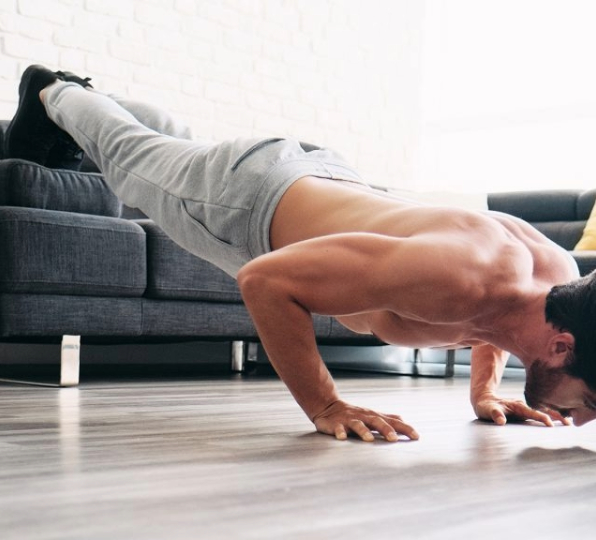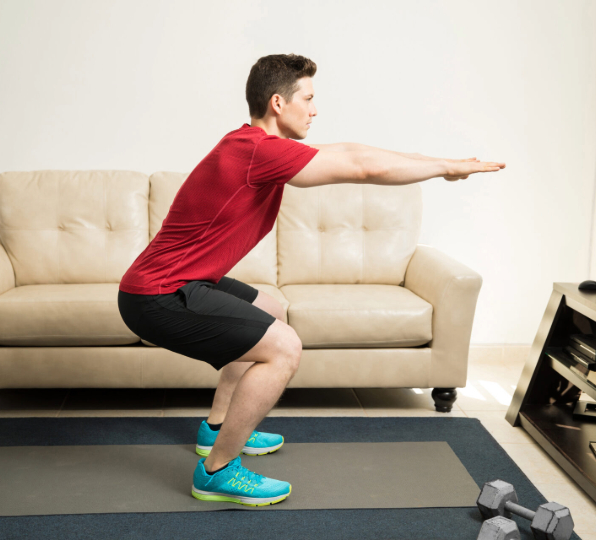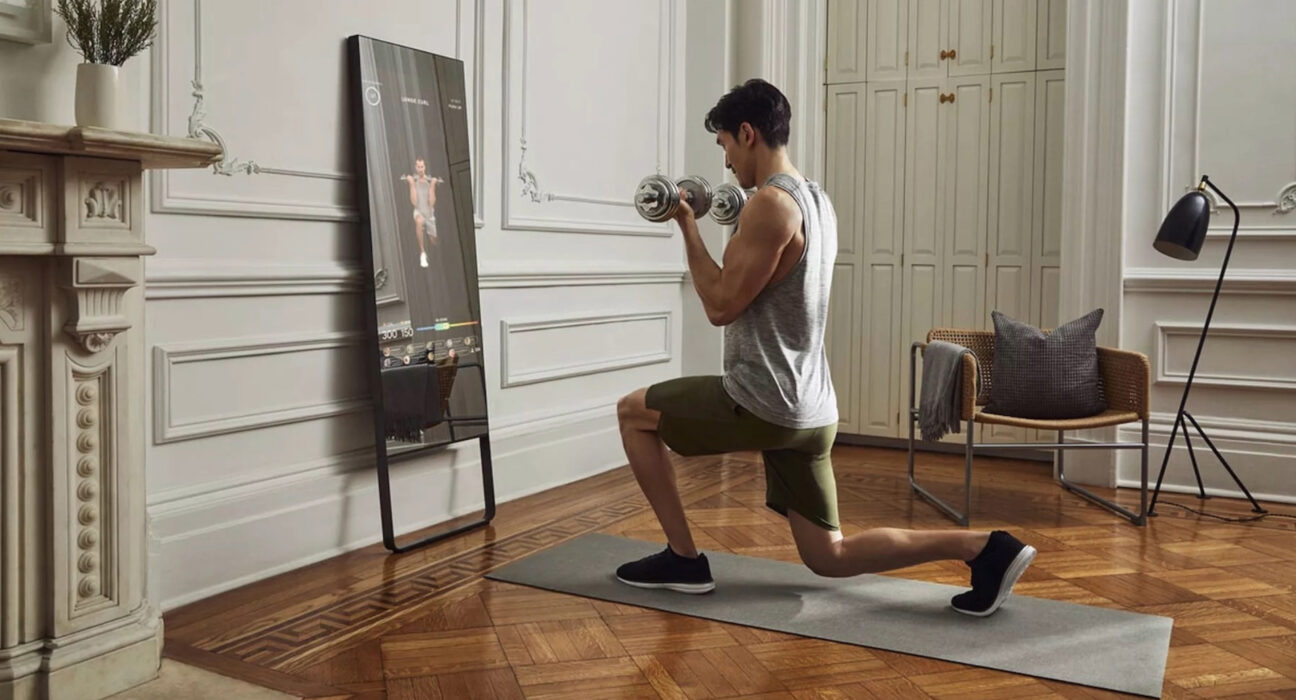Introduction:
In the fast-paced world we live in, finding time to hit the gym or attend fitness classes can be challenging. However, maintaining a consistent exercise routine is essential for our physical and mental well-being. Fortunately, you don’t need fancy equipment or a gym membership to get a great workout. Bodyweight exercises offer a convenient and effective way to build strength, improve flexibility, and boost cardiovascular health from the comfort of your own home. In this comprehensive guide, we’ll explore a variety of bodyweight exercises that target different muscle groups, catering to individuals of all fitness levels.
1. Push-Ups
Push-ups are a classic and effective bodyweight exercise that target multiple muscle groups, including the chest, shoulders, triceps, and core. To perform a push-up, start in a plank position with hands shoulder-width apart and arms fully extended. Lower your body by bending your elbows until your chest nearly touches the ground, keeping your core engaged and spine neutral. Push back up to the starting position by straightening your arms, exhaling as you exert force. Push-ups can be modified to suit different fitness levels by adjusting hand placement, performing on knees, or elevating feet. Incorporating push-ups into your workout routine can help build upper body strength, improve muscular endurance, and enhance overall fitness.
2. Bodyweight Squats
Bodyweight squats are a fundamental and versatile exercise that target the lower body, including the quadriceps, hamstrings, glutes, and calves. They are an excellent choice for individuals of all fitness levels, as they require no equipment and can be performed virtually anywhere. Bodyweight squats not only help to build strength and muscle tone but also improve functional movement patterns and enhance overall mobility and flexibility.
To perform a bodyweight squat, start by standing with your feet hip-width apart and toes pointing slightly outward. Engage your core muscles and keep your chest lifted and shoulders back throughout the movement. Lower your body by bending your knees and hips, as if sitting back into an imaginary chair. Keep your weight in your heels and lower down until your thighs are parallel to the ground, or as far as comfortable while maintaining proper form. Ensure that your knees are aligned with your toes and do not extend past them. Press through your heels to return to the starting position, squeezing your glutes at the top of the movement. Bodyweight squats can be modified to suit different fitness levels and goals. Beginners may start with partial squats or use a chair or wall for support, gradually progressing to deeper squats as strength and mobility improve. Advanced variations, such as jump squats or pistol squats, can be incorporated to increase intensity and challenge coordination and balance.
3.Planks
Planks are a foundational and highly effective core-strengthening exercise that targets multiple muscle groups, including the abdominals, obliques, lower back, and shoulders. This static exercise requires no equipment and can be performed virtually anywhere, making it a popular choice for individuals looking to improve core stability, posture, and overall strength.
To perform a plank, start by lying face down on the floor or exercise mat. Position your elbows directly beneath your shoulders and place your forearms on the ground, palms facing down. Engage your core muscles and lift your body off the ground, balancing on your toes and forearms. Maintain a straight line from your head to your heels, avoiding any sagging or arching of the back. Keep your neck neutral and gaze down at the floor to prevent straining the neck muscles. Hold the plank position for as long as possible while maintaining proper form and breathing steadily. Beginners may start with shorter holds, aiming to gradually increase the duration as strength and endurance improve. Advanced variations, such as side planks, extended planks, or plank with leg lifts, can be incorporated to add variety and challenge different muscle groups.
4.Lunges
Lunges are a versatile and effective lower body exercise that targets the quadriceps, hamstrings, glutes, and calves while also engaging the core and stabilizer muscles. This dynamic movement not only builds strength and muscle tone but also improves balance, coordination, and functional movement patterns. Lunges can be performed using body weight alone or with added resistance, such as dumbbells or barbells, to increase intensity and challenge different muscle groups.
To perform a basic lunge, start by standing tall with your feet hip-width apart and hands on your hips or at your sides. Take a large step forward with one foot, ensuring that your knee is directly above your ankle and your thigh is parallel to the ground. Lower your back knee towards the ground, keeping your torso upright and core engaged. Your front knee should be bent at a 90-degree angle, with your back knee hovering just above the ground. Press through your front heel to return to the starting position, then repeat on the other side. Lunges can also be performed in various directions, including forward lunges, reverse lunges, lateral lunges, and walking lunges, to target different muscle groups and movement patterns. Additionally, lunges can be modified to suit different fitness levels and accommodate individual needs. Beginners may start with shallow lunges or use a chair or wall for support, while advanced practitioners can increase the intensity by adding weight, increasing the range of motion, or incorporating plyometric jumps.
5.Mountain Climbers
Mountain climbers are a dynamic and challenging exercise that target multiple muscle groups, including the core, shoulders, arms, and legs, while also elevating heart rate for cardiovascular benefits. This full-body movement requires no equipment and can be performed virtually anywhere, making it a convenient and effective addition to any workout routine.
To perform mountain climbers, start in a high plank position with your hands directly beneath your shoulders and your body forming a straight line from head to heels. Engage your core muscles and keep your hips stable throughout the movement. Alternate bringing one knee towards your chest while simultaneously extending the other leg back, as if running in place. Keep your movements controlled and maintain a steady pace, switching legs in a fluid motion. Mountain climbers can be performed at varying speeds and intensities to suit different fitness levels and goals. Beginners may start with slow, controlled movements, focusing on maintaining proper form and breathing rhythm. As strength and endurance improve, individuals can gradually increase the speed and intensity of the exercise to elevate heart rate and challenge muscular endurance.
6. Burpees
Burpees are a dynamic and intense full-body exercise that combines strength, cardio, and plyometrics to provide a comprehensive workout in a single movement. This high-intensity exercise targets multiple muscle groups, including the chest, shoulders, arms, core, and legs, while also elevating heart rate for cardiovascular benefits. Burpees are a favorite among fitness enthusiasts for their effectiveness in burning calories, building strength, and improving overall fitness levels.
To perform a burpee, start in a standing position with your feet shoulder-width apart. Lower your body into a squat position, bending your knees and placing your hands on the floor in front of you. Kick your feet back into a plank position, keeping your core engaged and body forming a straight line from head to heels. Perform a push-up by lowering your chest towards the ground, then pressing back up to the plank position. Jump your feet back towards your hands and explosively jump up into the air, reaching your arms overhead.
Burpees can be modified to suit different fitness levels and goals. Beginners may start with a simplified version, omitting the push-up or jumping component and focusing on mastering the basic movement pattern. As strength and endurance improve, individuals can gradually increase the intensity by adding a push-up, performing a squat jump at the top of the movement, or increasing the speed and repetitions. In addition to building strength and endurance, burpees offer numerous benefits for overall health and fitness. They elevate heart rate and increase cardiovascular endurance, making them an effective cardio exercise for fat burning and improving aerobic capacity. Furthermore, burpees engage multiple muscle groups simultaneously, helping to improve functional movement patterns and enhance athletic performance.
7. Bicycle Crunches
Bicycle crunches are a dynamic and effective abdominal exercise that targets the rectus abdominis, obliques, and hip flexors while also engaging the lower back and stabilizer muscles. This compound movement mimics the motion of pedaling a bicycle, hence the name, and provides a comprehensive workout for the core muscles. Bicycle crunches are popular among fitness enthusiasts for their ability to strengthen and tone the midsection while also improving core stability and flexibility.
To perform bicycle crunches, start by lying flat on your back with your hands behind your head and elbows pointing out to the sides. Lift your legs off the ground and bend your knees to a 90-degree angle, keeping your lower back pressed into the floor. Engage your core muscles and lift your head, neck, and shoulders off the ground, bringing your right elbow towards your left knee while simultaneously extending your right leg straight out. Alternate sides in a fluid pedaling motion, twisting your torso and touching your elbow to the opposite knee with each repetition.
Bicycle crunches can be performed at varying speeds and intensities to suit different fitness levels and goals. Beginners may start with slow, controlled movements, focusing on maintaining proper form and breathing rhythm. As strength and endurance improve, individuals can gradually increase the speed and range of motion of the exercise to challenge the core muscles more intensely.
In addition to building strength and muscle tone, bicycle crunches offer numerous benefits for overall health and fitness. They improve core stability and balance by engaging multiple muscle groups simultaneously and promoting coordination between the upper and lower body. Furthermore, bicycle crunches help to improve spinal mobility and flexibility, reducing the risk of back pain and injury. Moreover, bicycle crunches can be modified to target different areas of the core and accommodate individual needs. Variations such as reverse bicycle crunches, oblique bicycle crunches, or single-leg bicycle crunches can add variety and challenge different muscle groups.


Conclusion:
Tech neck is a prevalent and preventable condition that affects individuals of all ages in today’s digital-centric society. By understanding its causes, symptoms, prevention strategies, and treatment options, individuals can take proactive steps to maintain good posture, reduce strain on the neck and spine, and improve overall spinal health. Remember to prioritize ergonomics, practice mindful screen time habits, and seek professional help if needed to prevent and alleviate the effects of tech neck. With a proactive approach and commitment to spinal health, individuals can enjoy the benefits of technology without sacrificing their well-being.












